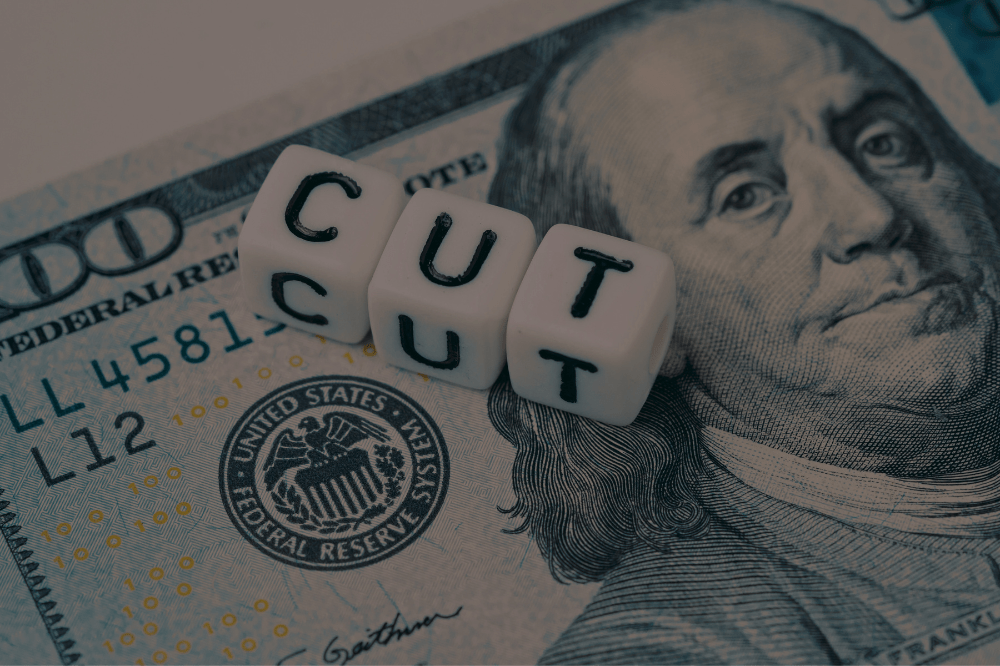The Federal Reserve cut interest rates for the first time in four years. Find out how this affects you!
Today, September 18, the Federal Reserve announced a half-percentage point cut in its benchmark rate, lowering it by 50 basis points, now ranging between 4.75% and 5%. This move aims to provide some relief from the high borrowing costs that have burdened consumers recently. The federal rate is the interest rate at which banks lend to each other overnight. Although it’s not directly the rate that consumers get, the Fed’s decision influences the borrowing and saving rates they stumble upon or recieve by banks.
Over the past two years, a series of rate hikes pushed the central bank’s benchmark to its highest level in over two decades, increasing borrowing costs for consumers and straining household budgets. However, as inflation begins to ease, we get to see a cut on that rate.
However, Greg McBride, chief financial analyst at Bankrate.com, warned that a single rate cut won’t drastically alleviate high financing costs. “What will be more significant is the cumulative effect of a series of interest rate cuts over time”, he added.
How Does The Federal Reserve Interest Rate Cut Affect You?
Interest rate changes often benefit some while disadvantaging others. Lower rates generally favor borrowers but hurt savers, but the impact largely depends on whether you are currently borrowing, saving, or have locked-in rates. Here’s how the recent rate cut might affect different aspects of your finances:
Credit Cards
Most credit cards have variable rates that are closely tied to the Fed’s benchmark. As a result of recent rate hikes, average credit card interest rates climbed from 16.34% in March 2022 to over 20% today. With the new rate cut, annual percentage rates (APRs) will start to decrease, but the reduction will be gradual. By 2024, average APRs are still expected to hover around 19%, according to McBride.
“Interest rates took the elevator going up, but they’ll be taking the stairs coming down”, he said.
Since the rates won’t drop fast enough to rescue you from debt, paying off high-interest credit card debt should remain a top priority. Using 0% balance transfer offers can be an effective strategy to reduce credit card debt more efficiently, McBride advised.
Mortgage Rates
While 15- and 30-year mortgage rates are fixed and tied to Treasury yields and the broader economy, anyone looking to buy a home has lost purchasing power in recent years due to inflation and Fed policies.
The average 30-year fixed-rate mortgage is around 6.3%, according to Bankrate. Jacob Channel, senior economist at LendingTree, expects mortgage rates to stay between 6% and 6.5%, with a possibility of dipping below 6%. However, he noted that rates are unlikely to return to the historic lows seen during the pandemic.
“Though they are falling, mortgage rates nonetheless remain relatively high compared to where they stood through most of the last decade. Home prices remain at or near record highs in many areas. There are a lot of people who won’t be able to buy until the market becomes cheaper”, Channel added.
Auto Loans
Auto loans usually have fixed rates, but higher car prices and borrowing costs have stretched car buyers financially. The average rate for a five-year new car loan is now over 7%, compared to 4% before the Fed began raising rates, according to Edmunds. The Fed’s rate cut could bring auto loan rates below 7%, due to competition among lenders and market incentives, providing some relief.
“Many Americans have been holding off on making vehicle purchases in the hopes that prices and interest rates would come down, or that incentives would make a return. A Fed rate cut wouldn’t necessarily drive all those consumers back into showrooms right away, but it would certainly help nudge holdout car buyers back into more of a spending mood”, said Jessica Caldwell, Edmunds’ head of insights.
Student Loans
Federal student loan rates are fixed, so borrowers won’t be immediately affected by the rate cut. However, private student loans can have fixed or variable rates linked to the Treasury bill or other benchmarks. As the Fed cuts rates, variable-rate private student loans will decrease over one to three months. Borrowers with variable-rate loans may also have the option to refinance into more affordable fixed-rate loans. However, extending the loan term could result in higher interest payments overall.
Savings Rates
The central bank doesn’t directly control deposit rates, but the yields tend to follow changes in the federal funds rate. Due to recent rate hikes, online savings accounts now offer yields above 5%, a level not seen in nearly two decades, according to Bankrate.
According to LendingTree’s credit analyst, Matt Schulz, “yields aren’t going to fall off a cliff immediately after the Fed cuts rates”. So, it might be a good idea to open a high-yield savings account or lock a certificate of deposit (CD) before it starts to fall.

